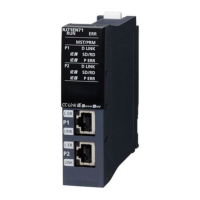15
Safety device A device that can be used in safety programs
Safety function module Another name for the R6SFM
Safety label A label that can be used in safety programs
Safety station A generic term for a station that performs safety communications and standard communications
Seamless communication Communication that allows users to access a different kind of networks without having to consider the
differences as if data were exchanged within one single network
SEND A generic term for the JP.SEND and GP.SEND
SIL2 function module Another name for the R6PSFM
This module is used with the SIL2 Process CPU as a pair and performs safety control. The module can only be
paired with the SIL2 Process CPU.
SIL2 mode An operation mode of the I/O module and the intelligent function module to perform safety input and output at the
SIL2 level. For details on the SIL2 mode, refer to the following.
Manuals for the I/O module or the intelligent function module used
SIL2 Process CPU A generic term for the R08PSFCPU, R16PSFCPU, R32PSFCPU, and R120PSFCPU.
This module is used with a SIL2 function module as a pair, and performs both standard control and safety control.
This module is also used with a redundant function module as a pair and configures a redundant system.
SINFSTRD A generic term for the J.SINFSTRD, JP.SINFSTRD, G.SINFSTRD, and GP.SINFSTRD
SINFTYRD A generic term for the J.SINFTYRD, JP.SINFTYRD, G.SINFTYRD, and GP.SINFTYRD
Slave station A generic term for a local station, remote I/O station, remote device station, and intelligent device station
SLMPREQ A generic term for the J.SLMPREQ, JP.SLMPREQ, G.SLMPREQ, and GP.SLMPREQ
SREAD A generic term for the JP.SREAD and GP.SREAD
Standard communications A generic term for cyclic transmission and transient transmission
Standard station A generic term for a station that performs standard communications
Standard/safety shared label A label that can be used in both programs and safety programs. This label is used to pass device data from
safety programs to programs.
Standby system A backup system in a redundant system
Submaster operating station A station that monitors the status of a master operating station in the network where a master station and
submaster station are connected. Only one master station can be used in a network.
Submaster station A station that serves as a master station to control the entire network if the master station is disconnected. Only
one master station can be used in a network.
SWRITE A generic term for the JP.SWRITE and GP.SWRITE
System A A system that is set as the system A to distinguish two systems, which are connected with two tracking cables.
When the two systems start up at the same time, this system will be a control system. System switching does not
affect the system A/B setting.
System B A system that is set as the system B to distinguish two systems, which are connected with two tracking cables.
When the two systems start up at the same time, this system will be a standby system. System switching does
not affect the system A/B setting.
System switching A function which switches the systems between the control system and the standby system to continue operation
of the redundant system when a failure or an error occurs in the control system
Tracking cable An optical fiber cable used to connect two redundant function modules in a redundant system
Transient transmission A function of communication with another station, which is used when requested by a dedicated instruction or the
engineering tool
UINI A generic term for the G.UINI, GP.UINI, Z.UINI, and ZP.UINI
WRITE A generic term for the JP.WRITE and GP.WRITE
Term Description

